The new value equation at restaurants
Consumer perception of value has not changed as much as we think it has; people have shallower pockets but still want to eat at their favorite restaurants.
16 May 2024
Share this exclusive content from Saladplate
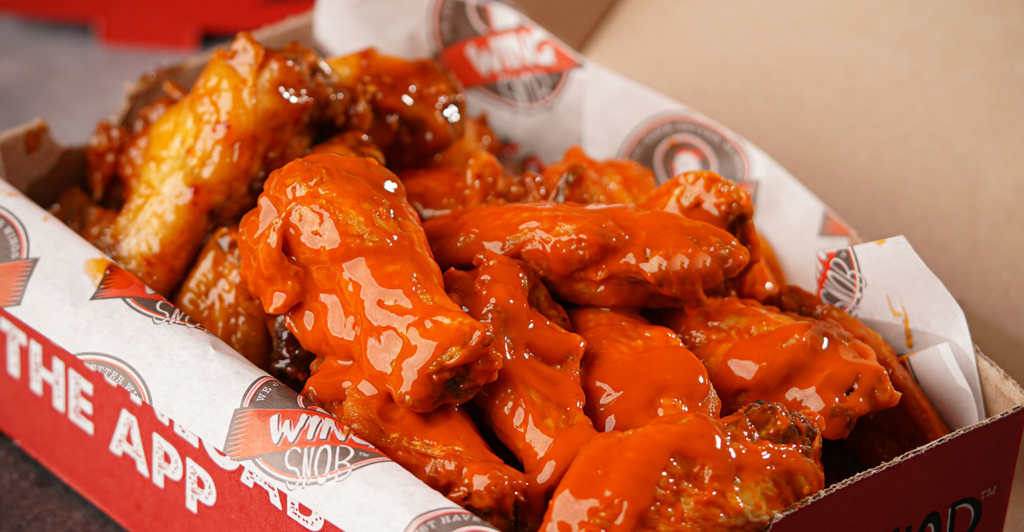
Photo Courtesy of Wing Snob
Restaurant value used to be a much simpler calculation: Discount-driven customers would seek out dollar meals at quick-service restaurants, call for pizza delivery on Friday nights (sans delivery fees), and then splurge on full-service meals on rarer occasions. But in 2024, with dollar menus all but extinct, and newer variables like convenience pricing, service fees, shrinkflation, and dynamic pricing in the mix, the consumer value equation has never been more complex.
Or has it? Customers may have more options than ever before, from ordering almost any food they want from the comfort of their own home to choosing to dine out “the old-fashioned way” (and every “channel” in between), but spending habits have not changed as much as we might think they have. According to data from Technomic, customers are roughly as price-conscious now as they were just before the pandemic. In a survey, half of customers said that they picked restaurants with lower prices in Q1 2020, while 52% of customers said they do so in Q1 2024, and the exact same percentage of customers (68%) said they pay close attention to menu prices in both Q1 2020 and Q1 2024.
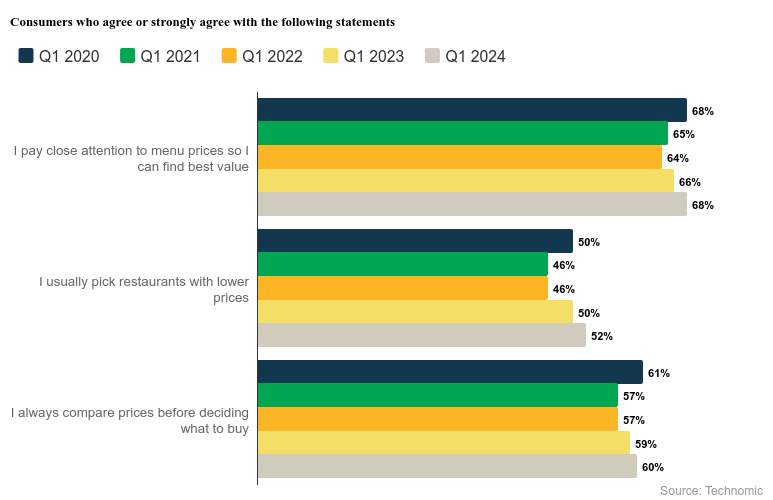
Photo caption: Chef Shinobu Namae’s signature dish “Fixed Point” is a symbol of the restaurant’s culinary evolution. | Photo Credit: L’Effervescence
“Price sensitivity went down during the pandemic because people were more flush with cash; there were fewer places to spend it, but they had more on hand,” said Robert Byrne, director of consumer and industry insights for Technomic. “That’s not the case now, but restaurant prices aren’t the only things that have increased. It’s all expensive now. So, as a consumer, my thinking about restaurants is not any different than going to the grocery store or filling up my car with gas. … Consumers love restaurants. If they have $10 in their pocket, it’s going to go to foodservice, even if they can only afford a smoothie.”
For many consumers, even though inflation has cooled off from its peak of 9.1% in June 2022 to 3.5% in March 2024, according to the Bureau of Labor Statistics, wages have not kept up (though a recent study from Bankrate predicts that wages will catch up with price inflation by Q4 of this year). The bottom line is that people are not happy with prices, and price sensitivity may well be reaching a saturation point: Technomic data shows that a majority (55%) of customers would visit restaurants less often if prices keep going up.
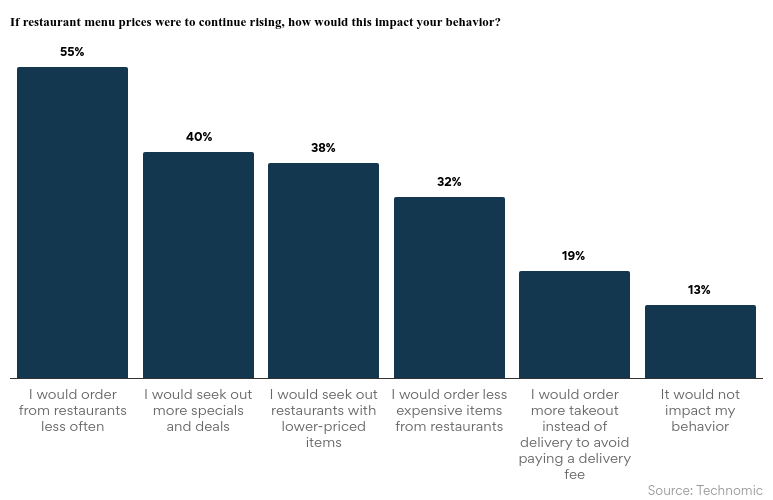
Another new variable in the macroeconomic climate is shifting perception of value in different food sectors. It might make sense that in times of economic pressure, people would go out to eat less often and spend more on groceries and at-home food instead. However, according to data from consumer data insight company HundredX, customer purchasing intent has fallen much more significantly for the grocery sector since Jan. 2023 than it has for restaurants. Additionally, the gap in value perception between quick-service restaurants and full-service restaurants has narrowed, as traditional quick-service restaurants continue to raise prices.
“We think that customers are feeling way worse about prices in general, and most of that has happened in the last six months,” said Andre Benjamin, vice president of strategy at HundredX. “It has gotten worse for fast-food restaurants than it has for sit-down. … People aren’t thrilled about seeing more of their dollars go out the door… but the irony is, even though we’ve seen people’s price sentiment correlate with inflation, they still want to go out to eat.”
Surprisingly, HundredX data shows that customer perception of pricing has gotten worse than customer perception of value, which has only slightly declined, showing that for the 2024 restaurant customer, price is not necessarily synonymous with value.
In recent quarters, full-service and limited-service chains have been shifting away from discounting and toward different expressions of value like digital loyalty programs and omnichannel accessibility. Brinker International CEO Kevin Hochman said in November that as a lot of brands “reverse some of that discounting trend,” their core guest becomes a higher-income earner, which gives brands the breathing room to not have to rely on discounting as much as they used to. Other casual-dining companies Darden and Dine Brands have echoed Hochman’s preferences for everyday value over discounting in recent months.
Restaurants shying away from discounting is comparable to the epidemic of “shrinkflation” that has captured the retail sector, with customers unhappy about fewer chips in the bag or smaller cookie sizes of their favorite snacks.
“You’ve seen these changes in retail a lot, but in fast-food restaurants they show up as value deals going away, or what used to be dollar menu items moving to the regular menu,” said Forrest Morgeson, director of research at the American Customer Satisfaction Index. “Inflation is having its impact across industries, and the price increases at fast-food restaurants over the past couple of years are impacting customers as well.”
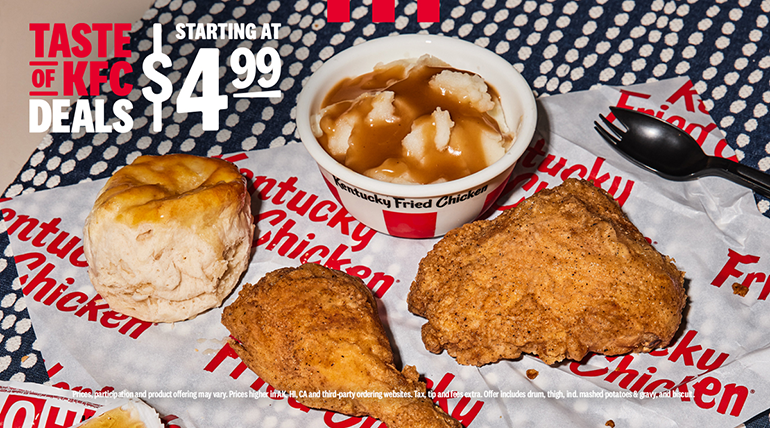
Courtesy of KFC
This makes KFC’s new “Taste of KFC Deals” value menu a brand differentiator, as it offers daily and weekly meal deals across group sizes, from $4.99 meals for one to $20 family meals. KFC chief marketing officer Nick Chavez said that it has been about five years since the Yum Brands-owned fried chicken brand has offered similar meal deals, and these were offered in the hopes that they will help boost traffic and stand out to those customers that are missing the old quick-service discounts.
“I think the consumer has never been under more pressure when it comes to the cost of eating at restaurants,” Chavez said. “We felt that we could come in with a solution to offer more affordable value in our restaurants in a way that doesn’t sacrifice quality or taste. … KFC has an opportunity to occupy a really unique spot when everything else is going up in price around them.”
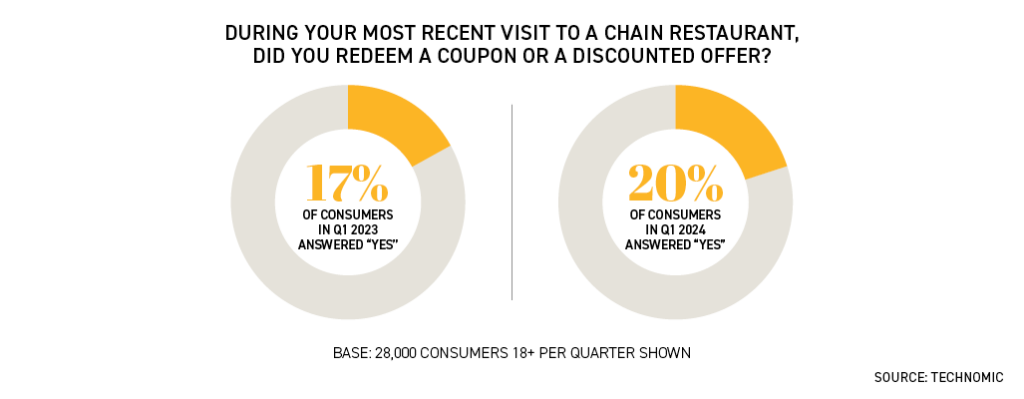
The consumer’s contradictory views of pricing and value further complicate the consumer value equation: People want to go out to eat, but their pockets may be shallower than they once were. This has pushed the restaurant industry into a barbell-like representation of price and value; on one end are people who are still chasing deals and discounts — from which brands bucking the trend like KFC will reap the benefits — and then on the other end are people that want to spend money on an experience when they have the dollars to eat out.
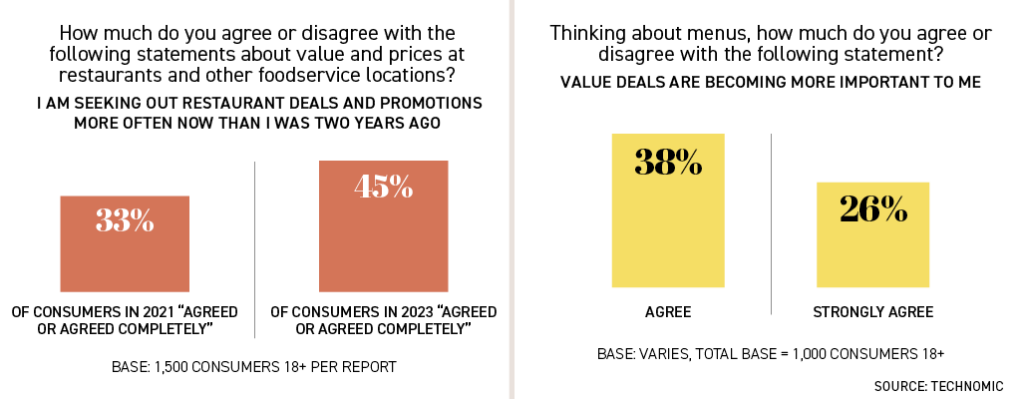
“The sentiment that [consumer value perception] is always specific to the occasion has become more apparent,” Byrne said. “Some of the highest-rated brands that we see for value are some of the most expensive — like, fine-dining and steakhouses always get amazing value scores, as well as premium coffee like Dutch Bros. Value may be less about price than it ever was before, but it is baked into the set of expectations that a consumer has about a foodservice experience based on the occasion. If it’s a special occasion or a treat, your wallet opens wider.”
The variables that go into the consumer value equation change based on not just the occasion, but also the type of service. William Densmore and Jose Luis Rivas, analysts from credit ratings agency and market research firm Fitch Ratings, said restaurants are trying to focus on where customers are finding value in attributes that are important to them. Besides food quality, customers traditionally find value in quick-service restaurants that perfect speed of service, order accuracy, and cleanliness. For full-service dining, especially post-pandemic, customer service, experience, and atmosphere top the list, in addition to food quality.
However, another newer variable in the value equation is omnichannel convenience. Operators, especially in the limited-service sectors, have been saying for years that customers want to be able to order food where they want, when they want it, and many of them are willing to pay a premium (through multiple delivery and service fees) for the convenience of doing so.
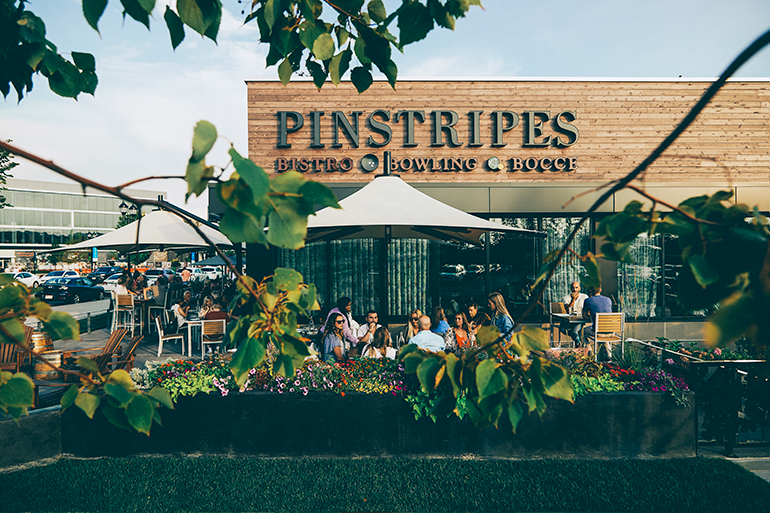
Photo Caption: Pinstripes, value comes from the entertainment interwoven with the culinary options. | Photo Courtesy of Pinstripe
“The biggest obstacle against us and anyone in the restaurant entertainment industry is both the couch and the iPhone,” said Dale Schwartz, founder and CEO of Pinstripes Bowling & Bocce. “It’s easier for somebody at home or somebody in the office to push a button and have the luxury of food coming to you. So, unless someone is doing something really tantalizing with terrific service, or in our case, a combination of dining and entertainment, you really need something compelling to fight against that inertia.”
Despite the ubiquity of third-party delivery services, price-sensitive customers are not significantly altering their spending habits for the sake of convenience. In fact, according to data from the Q1 2024 Technomic Consumer and Operator Outlook Report, 43% of customers said that they order delivery from third-party services less than they used to, while only 20% of customers increased their food delivery from third-party platforms.
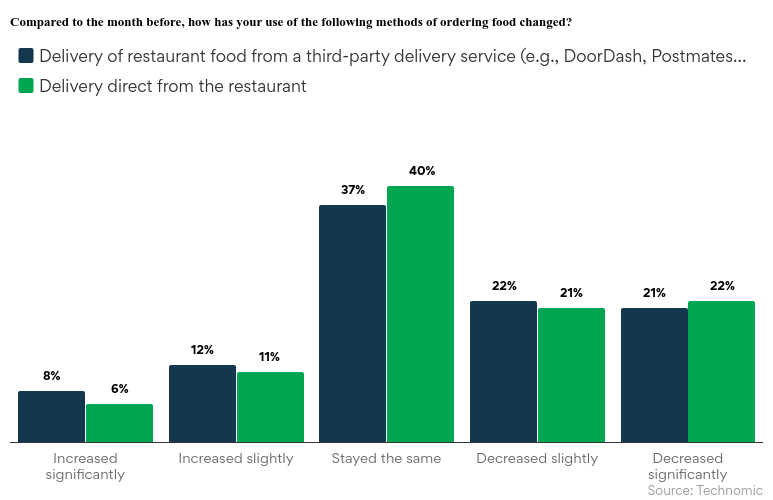
This is why many full-service and eatertainment brands like Pinstripes, as well as premium limited-service brands like Dutch Bros or Jersey Mike’s, have focused on staying constant, letting their value speak for themselves, and encouraging customers to interact with them directly instead of going to third-party delivery services.
“We’ve all ordered food on DoorDash that’s double what you would pay if you walked into the store yourself, but consumer norms have evolved and some people don’t mind spending $20 on a $10 sandwich,” said Jack Mashini, founder of Michigan-based concept Wing Snob, which has more than 50 units. “We want to encourage consumers to utilize our platform and become a customer in our system, and not just a DoorDash customer that happened to scroll through and stumble upon Wing Snob.”
Third-party delivery services and more premium dining experiences actually have more in common than at first glance. On one end, the customer is paying more for the convenience of not leaving their couch, and on the other, the customer is willing to pay more because they’re experiencing a lot more than eating takeout from their couch, whether that’s an occasion-based steakhouse meal or playing a round of bocce.
Matt Tucker, head of the reservation platform Tock, knows that much like customers who are willing to look past delivery fees, people are willing to pay a premium for unique dining experiences that add value to a simple dinner out at a restaurant. Beyond restaurant reservations, Tock’s dining experiences include private parties, demos and tastings, and seats at coveted tables.
“You have your typical value players at the QSR level, and then on the other extreme where Tock started, you have your fine-dining, white tablecloth types of restaurants, and both have addressed the value equation in different ways,” Tucker said. “Across the board, you want to make sure that you offer a product and experience that entices your guest to come back on a consistent basis, regardless of segment.”
Tucker said that for experience reservations at Tock, the “experience is not just the meal on the plate,” but rather something more “thoughtful and interesting,” which is why experience has become an even bigger part of the equation than ever before.
Offering prices at different times or occasions might work for delivery companies like Uber and DoorDash, or reservations platforms like Tock, but companies like Wendy’s exploring dynamic pricing in the limited-service sector hit a nerve with customers. The value in paying delivery fees is convenience-based, and the value in paying more for higher-end restaurants is experience-based, but what is the value in being charged more (or less) depending on the time of day?
“We never expect our plane tickets to be the same from one day to another, so we are already familiar with dynamic pricing,” said Morgeson of the American Customer Satisfaction Index. “But fast food is one of those things that we know how much our favorite meal costs, and I think a lot of consumers would notice if at noon when the drive-thru was packed, their favorite meal is now $8.99 instead of $7.99, in a way that we might not notice if a product went up in price on Amazon. I think [if dynamic pricing were to become widespread], people would strategically tweak their behavior. They might not want to eat until 6:00, but they’ll go at 4:00 because it’s less expensive.”
While this is all speculation, it sounds like even the potential rise of dynamic pricing at limited-service restaurants wouldn’t stop customers from going out to restaurants. Like everything else, they might just have to tweak their habits to get the value they want from their favorite foodservice experience.

Source: Nation’s Restaurant News



